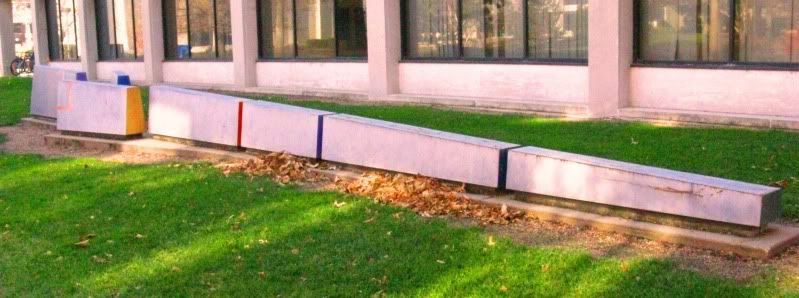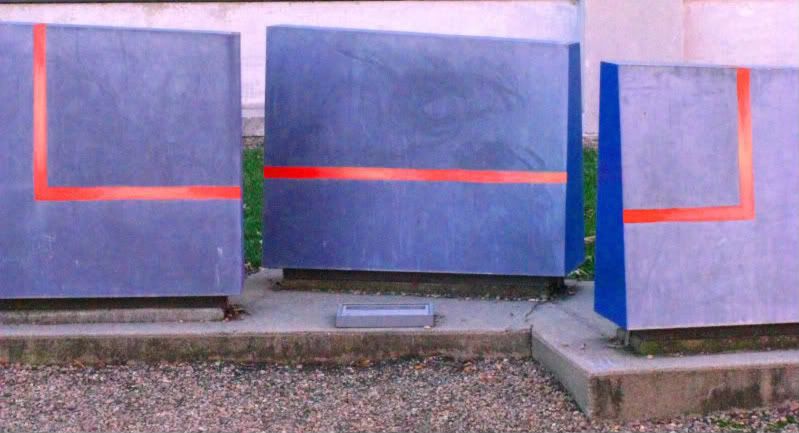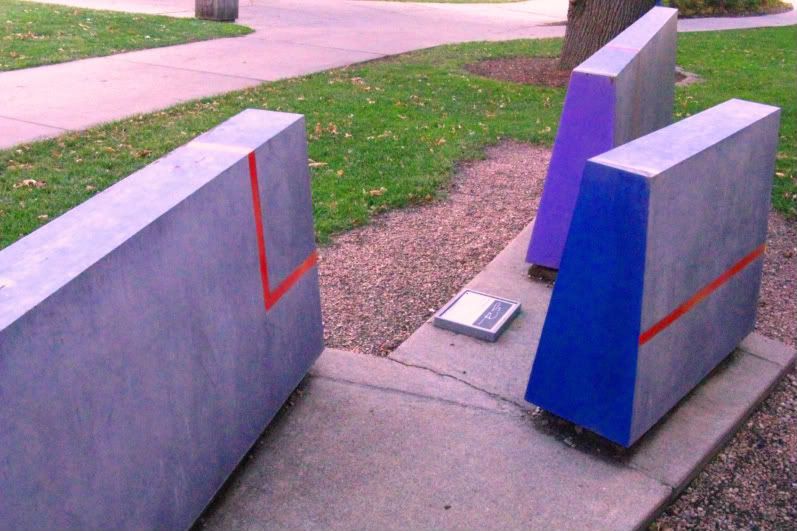I've been observing you for some time now, being careful to always keep my distance so I could continue to watch you with studied intent. When I found out I had been given an opportunity to meet with you, of course I "googled" you in order to prepare myself for our first encounter. (As an aside, I will have to commend you on your minimal web presence--it is quite an amazing accomplishment to remain "under the radar" during this digital age.) After much anticipation on my part, we formally met one sunny afternoon in late November--I'm not sure if you remember it specifically. Over the last few weeks our relationship has grown, but I feel that we are at an impasse and there are some sentiments I need to air. Just as the weather has grown chilly, so have my feelings towards you. I have come to make a few observations--I am a rather observant person, you will recall--and I wanted to express what I've begun to notice about you. I also wanted to address my interpretation of the argument you've been making. Finally, I want to discuss your use of negativity. We'll think of it as a trip down memory lane...
While I've come to know you as V.W., you are titled "Variable Wedge" and call the Sculpture Garden of the Sheldon Museum of Art home. Initially, I felt that we had a connection because of our shared background; you were constructed from 1982-1983 and now reside in Nebraska, I was born in 1983 and now live in Nebraska as well. Sam Richardson, who was the artistic mastermind behind your design and creation, has a history of creating breathtaking landscape art works--both in the genres of painting and sculpture. I hope you realize that you owe a lot to him; he wisely chose to fashion you from COR-TEN steel. I consider this as a wise decision because he realized that the use of "weathering steel" would prevent you from being subjected to the sometimes severe environmental conditions. I assume sometimes you are resentful of his decision; because you are made of a steel alloy you are incapable of eroding and this has made you cold, hard, and unchanging. He was only trying to protect you. If you were made of weaker material your purpose would be lost as your appearance would diminish over time. And face it, your looks are one of your best qualities. I, for one, am appreciative of Sam's carefully chosen choice of material, as well as the deliberate choices he made in your design.
 One of the first things I noticed about you was your expanse. There are many parts of you (seven, to be exact) that are aligned and unified to make one sprawling art form, extending over fifty feet. From a distance, your arrangement is reminiscent of a sprawling mountain range, creating a tribute to Sam Richardson's landscape training. When I first saw you in person that fateful day in November I thought to myself, "Well, it is obvious that Variable Wedge is a dead ringer for the purple mountain majesties of yonder. Case closed." But what I didn't realize, is that while you paid homage to nature, you also had an ulterior motive, hidden from most of your unsuspecting viewers. I knew, given time, I could unlock your true meaning, and understand your argument. This wouldn't happen until much later... But I digress.
One of the first things I noticed about you was your expanse. There are many parts of you (seven, to be exact) that are aligned and unified to make one sprawling art form, extending over fifty feet. From a distance, your arrangement is reminiscent of a sprawling mountain range, creating a tribute to Sam Richardson's landscape training. When I first saw you in person that fateful day in November I thought to myself, "Well, it is obvious that Variable Wedge is a dead ringer for the purple mountain majesties of yonder. Case closed." But what I didn't realize, is that while you paid homage to nature, you also had an ulterior motive, hidden from most of your unsuspecting viewers. I knew, given time, I could unlock your true meaning, and understand your argument. This wouldn't happen until much later... But I digress.
My eyes were first drawn to the colored markings throughout your body. These complementary colors of orange and blue, and then purple and yellow seemed to be wedged throughout the gradient of slate gray that covered your surface. The edges of each of your seven wedges were painted with these bright, contrasting colors. The colors were also suggestive of the colors that the sun creates as it nears the horizon. When I looked at your profile, I could imagine myself looking at the sunrise over a distant mountain range. Still I wondered, "What more could 'Variable Wedge' represent?" I'm sure you've heard this before, but three of your pieces have orange lines that dissect your gray plane. These lines form a focal point that I found relatively difficult to interpret. As my perspective changed depending on my vantage point, so did my understanding of what these markings could represent. I found myself wondering why the lines were even included in your composition? Were my eyes drawn to this area because I was supposed to take note of something? I thought I had you all figured out, V.W., but this observation had me confused again.

I changed my perspective again to further investigate reasons why this single detail of the many that combine to create you captured my interest so. I think you have become customary to people's opinions of you changing. After all you are titled "Variable Wedge"; your name speaks to an awareness that change is impossible to avoid. As the physical distance between us decreased, I began to sense separation and the appearance of unity you presented from a greater distance was lost. The orange colored lines also lost their connection and it seemed that the focal point poorly masked the void that was created within you. Most of your seven pieces are aligned as links in a chain, but there seemed to be a link missing! It's not that you had been vandalized, but this "missing link" created a negative space that enhanced your meaning. The repetition created by alignment made the contrast of the negative space even more noticeable. My interpretation of the use of negativity in your composition might have everything to do with my recent viewing of 4'33", an avant-garde piece that speaks to the truth of music--that even within the void there is beauty.
The void that I had uncovered was striking because it triggered an emotional response. It is funny how the mind plays tricks on us and we want to "fill in the gap," seeing what is really not in front of us. The act of completion is within human nature. Even within the silence we can find music, and even within a space devoid of material we can find meaning. Why is it that we tend to want to see the best, even when faced with the worst? When faced with a "variable wedge"--change that is subject to create an obstacle or separation within or without--we understand the agent of change is necessary. The negative space acts as an agent of change, a wedge, that was inserted within your composition, just as the complementary colors accented the gray profile, and just as your synthetic form is inserted into the natural environment. Why were so many different points of insertion necessary to address the change the indicators of change that we all experience? With these thoughts I must leave you, dear V.W. Our time together will be cherished, and I appreciate the I've cognitive challenge you've presented me with.
Deepest regards,
Ayana Hayes
Student, Art Observer, Friend
No comments:
Post a Comment